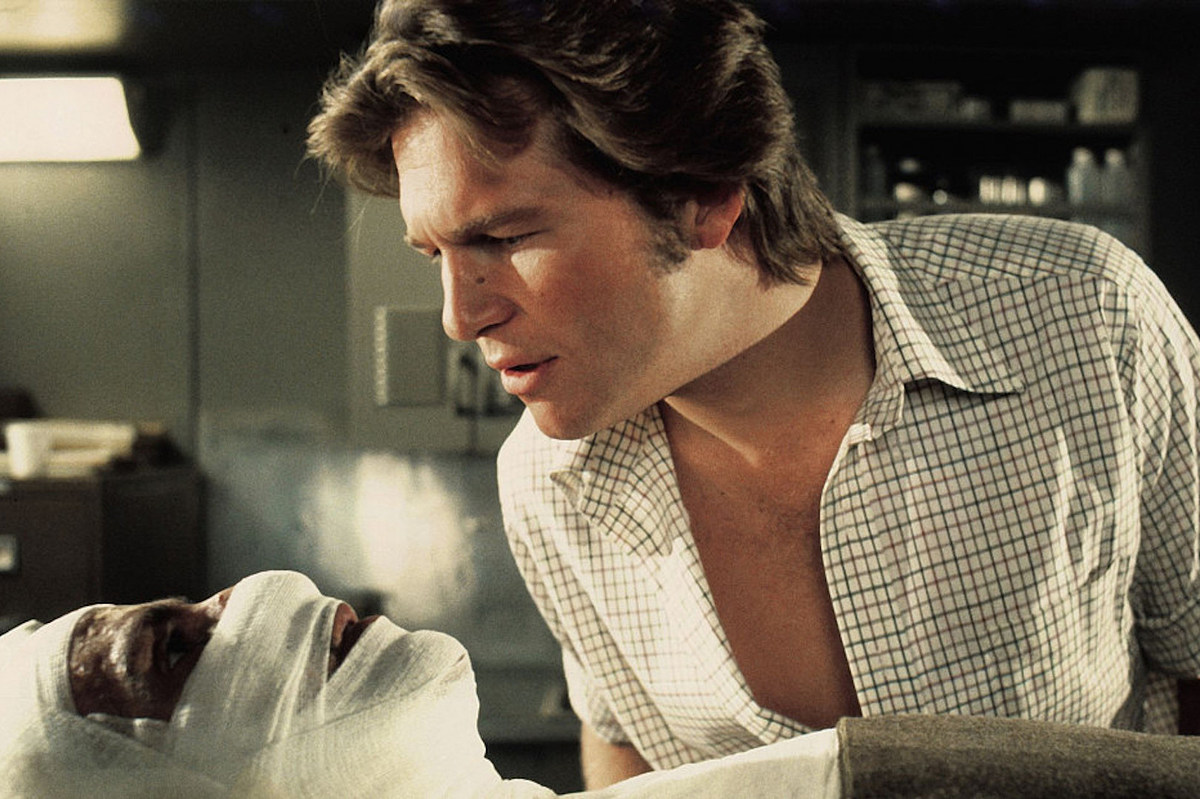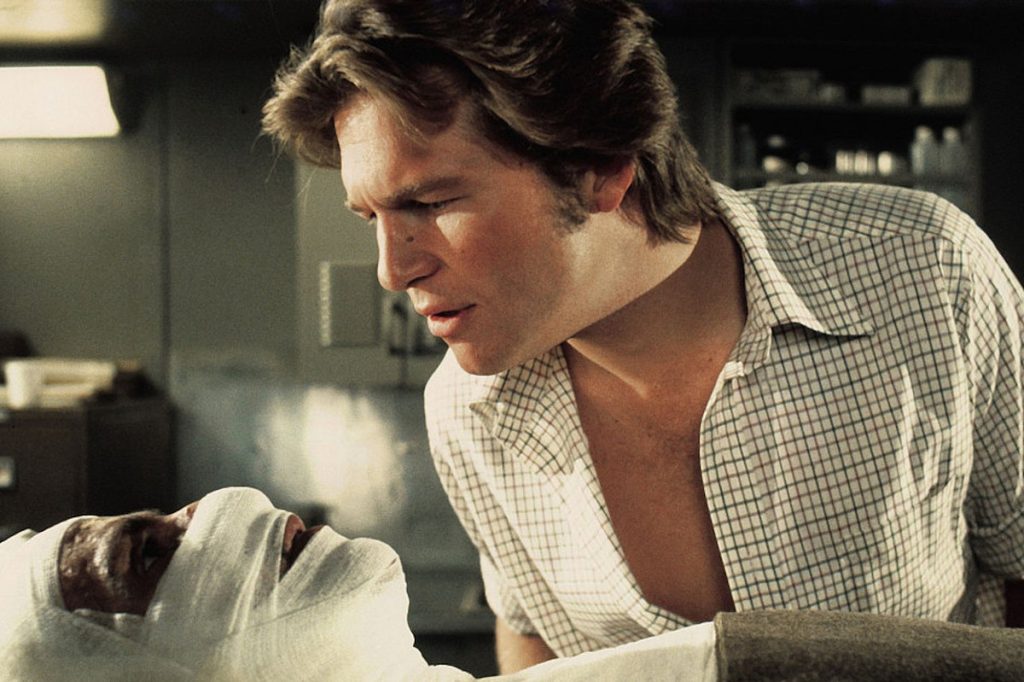
Winter Kills has one of the very best casts of any 1970s thriller: Jeff Bridges, John Huston, Belinda Bauer, Anthony Perkins, Eli Wallach, Sterling Hayden, Dorothy Malone, Ralph Meeker, Toshiro Mifune and even Elizabeth Taylor in a brief, silent cameo. It’s based on a novel by Richard Condon, whose work had already inspired three previous films, including The Manchurian Candidate. And Winter Kills explores (and satirizes) the myriad conspiracy theories around the assassination of President John F. Kennedy, a source of endless fascination amongst the American people, then and now.
So why have most people reading this never seen (and maybe never even heard of) Winter Kills until now?
It’s a mystery that’s arguably even more compelling than the one within the film itself, which is now getting a much overdue revival from Rialto Pictures, starting with a two-week run at New York’s Film Forum. A new 35mm print of the film was struck — the first in 40 years — and is being presented by Quentin Tarantino, who ranks among Winter Kills’ more high-profile fans.
Long before the film faded into semi-obscurity, the actual production of Winter Kills might be the most fascinating part of the entire story. Filming took years to complete — with a long break in the middle after the two key producers ran out of money and ran afoul of a vast array of creditors. Oh, and those two key producers? One of them wound up in federal prison and the other was found dead, “handcuffed to a bedpost and shot through the head, in his New York apartment.”
READ MORE: How Spider-Man’s Co-Creator Left His Mark on Indiana Jones
That’s according to Condon himself, in an article he wrote in 1983 titled “Who Killed Winter Kills?” that originally appeared in Harper’s Magazine and is reprinted in Rialto’s press kit for the revival. It lays out a tale with more twists and turns than Condon’s fictional saga, which tells the story of a murdered U.S. president’s half-brother (played in the film version by Jeff Bridges) as he slips down a rabbit hole of conspiracies connected to his sibling’s mysterious death.
Several years after Condon’s novel was published, it was acquired for adaptation by the two aforementioned producers: Robert Sterling and Leonard Goldberg. They offered Condon $75,000 for the rights to the book, plus a cut of the profits, then brought in novelist and screenwriter William Richert to adapt the novel and direct the screen version.
After signing the contracts, and taking a few meetings with Goldberg, Sterling, and Richert, Condon was largely uninvolved with the production. He writes in his article that he later learned that Sterling and Goldberg only raised $2.3 million of the roughly $6 million they needed to fully fund the picture — and yet they somehow convinced a slew of major movie stars and a professional Hollywood crew (including cinematographer Vilmos Zsigmond and production designer Robert Boyle) to start shooting — and then kept bluffing their way through for weeks, even as the money dried up, and the cast and crew stopped getting paid.
Almost every major film production has a “completion bond” which insures that in the case of financial or logistical catastrophe, the money needed to complete the shoot is guaranteed. Condon writes that Winter Kills inexplicably never had one — “and, even more amazing, nobody insisted on seeing one.” That would eventually come to haunt the film once Sterling and Goldberg exhausted their bank accounts. (Condon writes that things got so desperate that “at one point, the key grip approached Richert on behalf of the crew to say that they could raise $100,000 in two and a half hours from their own pockets if that would permit the film to be finished.”)
It wouldn’t. With two weeks left to go in production, a whole collection of creditors marched onto the set and ordered it shut down. For two years, Winter Kills’ raw footage sat on a shelf while Richert raised the money needed to finish the film. Somehow he did it, and found a company (Avco-Embassy) willing to distribute the movie. After all of that, Winter Kills still got solid reviews and drew solid box office in its initial limited release in the summer of 1979.
But the movie never expanded to more theaters beyond that, and essentially just disappeared for years, to the great confusion of Condon and Richert. The official reason given by Avco-Embassy, per Condon, was that they “never expected Winter Kills to get the critical and audience reception it attraction” and “had what they expected to be a red-hot summer item, a movie called Goldengirl” that they were booking everywhere they could at the time.
The filmmakers found those official explanations lacking. Then Goldberg was discovered murdered and a few years later Sterling was sentenced to 40 years in prison on drug charges. (Condon speculates that the former’s untimely death “‘could have been connected’ with the continuing bad deal he gave certain investors in [Winter Kills],” although the official story from the police was that Goldberg was killed by a pickup gone wrong.
Of course, in Winter Kills, the police are part of the web of conspiracies that murdered a fictional president. Or are they? Maybe, maybe not; part of the appeal of Winter Kills is that there are so many different potential killers presented, with so many different potential motives — maybe it was the mob, maybe it was the police, maybe it was a pissed-off Hollywood producer — that even after the “real” motive is revealed, there have been so many false narratives flying around that it becomes almost impossible to tell fact from fiction.
The post-truth world of Winter Kills is one of the many elements that look eerily prescient to 2023 eyes. (Its intermingling of politics and business may not have been ahead of its time in 1979, but it’s sadly no less timely today.) Some of the film’s satire strikes me as a little flimsy; maybe it’s personal preference, but I like the rougher edge of Condon’s The Manchurian Candidate, which presents an equally jaundiced view of public service. Still, it’s remarkable how the making of this movie seemed to mirror the bleak, corrupted world it presented onscreen for a very brief period in the late 1970s, and now, finally, once again.

The Worst Movies Released in August
Here are the worst cinematic disasters ever released at the end of summer.

